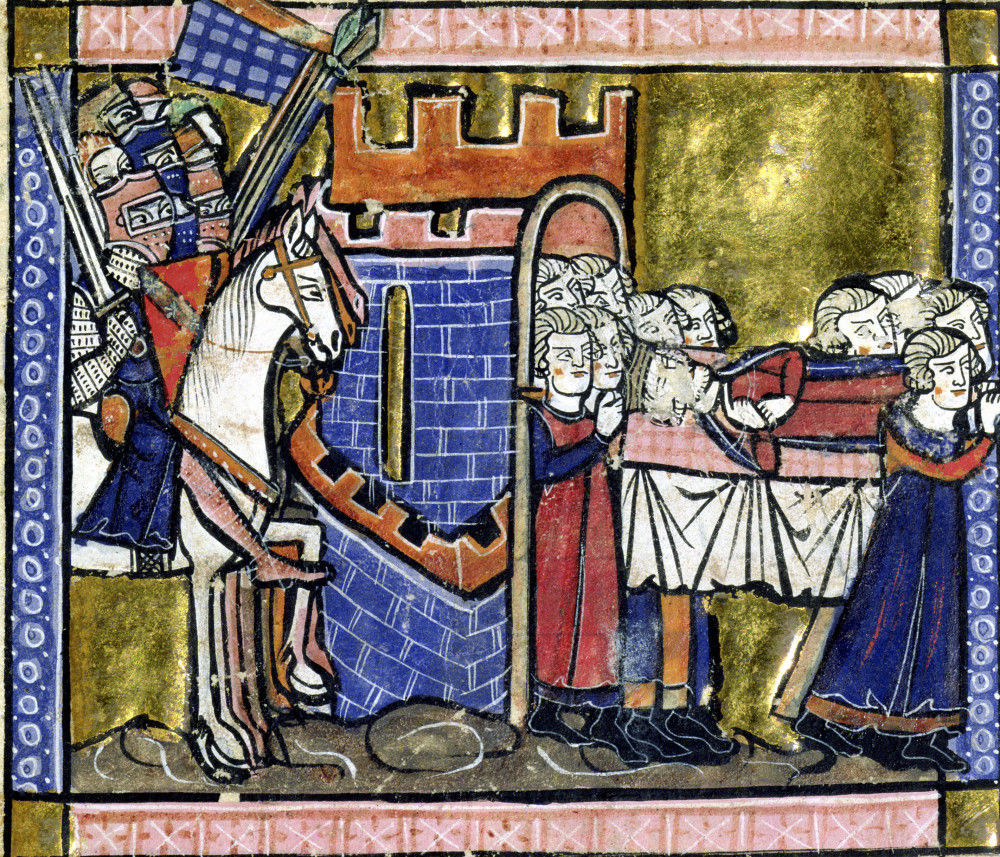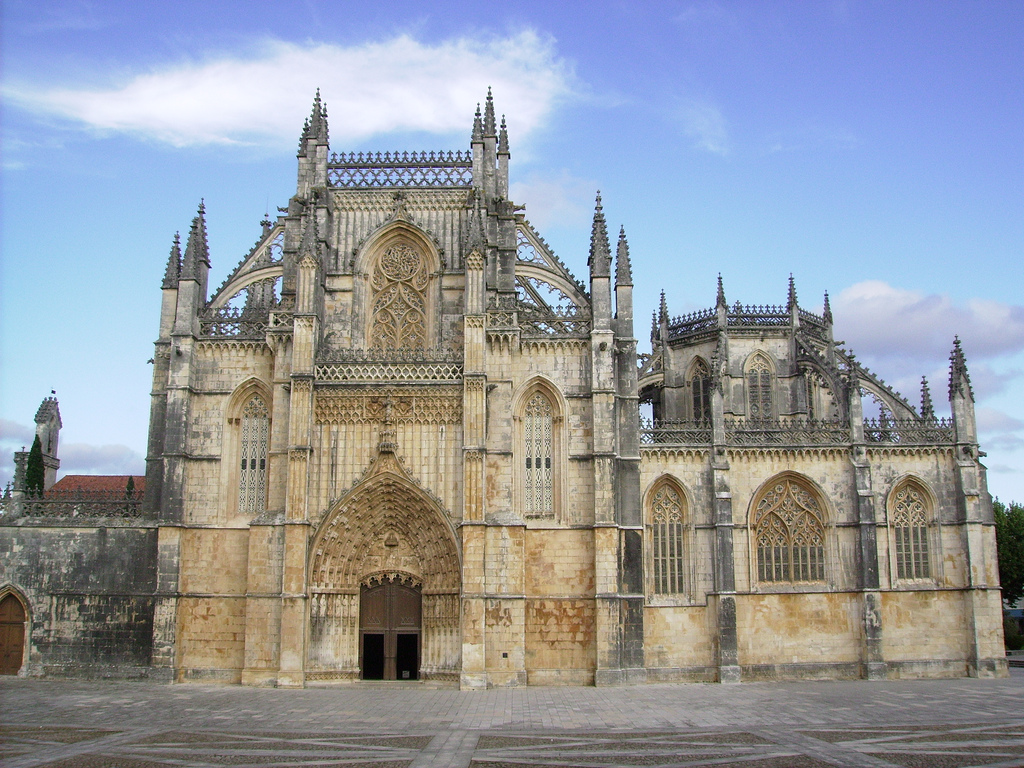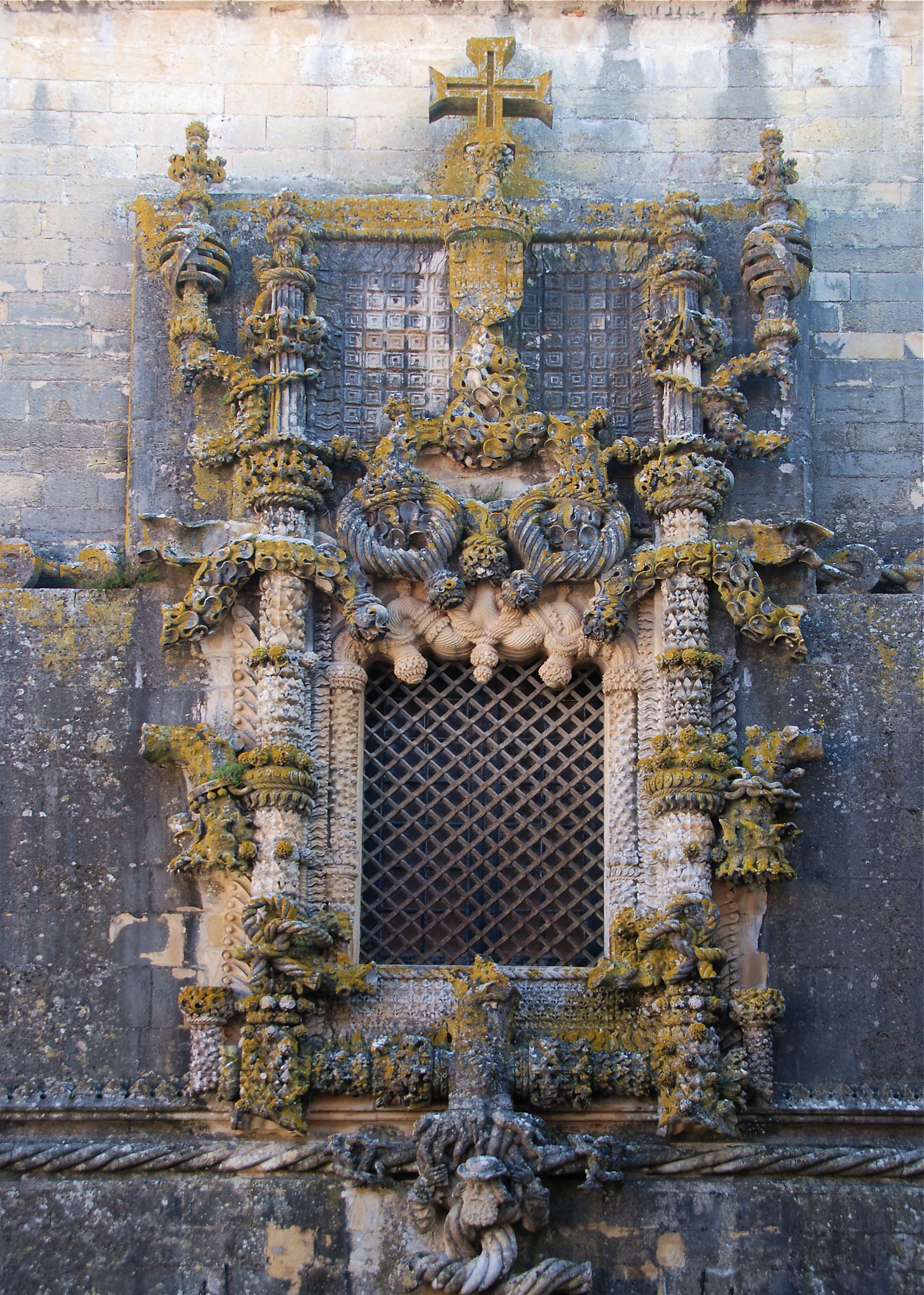|
Santa Cruz Monastery
The Monastery of the Holy Cross (), also known as the Church of the Holy Cross, is a National Monument in Coimbra, Portugal. Because the first two kings of Portugal are buried in the church it was granted the status of National Pantheon. Founded in 1131 outside the protecting walls of Coimbra, the Monastery of the Holy Cross was the most important monastic house during the early days of the Portuguese monarchy. Saint Theotonius founded this community of Canons Regular of the Holy Cross of Coimbra and served as their first prior. The monastery and church were erected between 1132 and 1223. The monastery was granted numerous papal privileges and royal grants, which allowed the accumulation of considerable wealth, at the same time as it consolidated its position on the politico-institutional and cultural scene. Its school, with its vast library, was highly respected in medieval times and was a meeting point for the intellectual and power elites. Its ''scriptorium'' was used for t ... [...More Info...] [...Related Items...] OR: [Wikipedia] [Google] [Baidu] |
Cristóvão De Figueiredo
Cristóvão de Figueiredo (died ) was a Portuguese Renaissance painter. Like many other important painters of the time, Cristóvão de Figueiredo was a pupil of Master Jorge Afonso, in Lisbon, in the early 16th century. He later worked together with Francisco Henriques, Garcia Fernandes and Gregório Lopes in executing various altarpieces in Lisbon. Between 1522 and 1533, Cristóvão de Figueiredo worked in the Santa Cruz Monastery in Coimbra and, in 1533, again joined Garcia Fernandes and Gregório Lopes in painting altarpieces for the Monastery of Ferreirim, near Lamego. Many of his paintings are now in the National Museum of Ancient Art The Museu Nacional de Arte Antiga (; MNAA), also known in English as the National Museum of Ancient Art, is a Portugal, Portuguese national art museum located in Lisbon. With over 40,000 items spanning a vast collection of painting, sculpture, gol ... (Lisbon) and the Machado de Castro Museum (Coimbra). Works Image:Deposição no Tum ... [...More Info...] [...Related Items...] OR: [Wikipedia] [Google] [Baidu] |
Christian Monasteries In Portugal
A Christian () is a person who follows or adheres to Christianity, a monotheistic Abrahamic religion based on the life and teachings of Jesus Christ. Christians form the largest religious community in the world. The words ''Christ'' and ''Christian'' derive from the Koine Greek title (), a translation of the Biblical Hebrew term ''mashiach'' () (usually rendered as ''messiah'' in English). While there are diverse interpretations of Christianity which sometimes conflict, they are united in believing that Jesus has a unique significance. The term ''Christian'' used as an adjective is descriptive of anything associated with Christianity or Christian churches, or in a proverbial sense "all that is noble, and good, and Christ-like." According to a 2011 Pew Research Center survey, there were 2.3 billion Christians around the world, up from about 600 million in 1910. Today, about 37% of all Christians live in the Americas, about 26% live in Europe, 24% live in sub-Saharan Africa, ab ... [...More Info...] [...Related Items...] OR: [Wikipedia] [Google] [Baidu] |
Augustinian Monasteries
Augustinian may refer to: *Augustinians, members of religious orders following the Rule of St Augustine *Augustinianism, the teachings of Augustine of Hippo and his intellectual heirs *Someone who follows Augustine of Hippo *Canons Regular of Saint Augustine also called "Augustinian Canons" or "Austin Canons" *Order of Saint Augustine, a mendicant order, also called "Augustinian Friars" or "Austin Friars" See also *Augustine (other) Saint Augustine of Hippo (354–430), was a Church Father. Augustine may also refer to: People * Augustine (actor) (1955–2013), Malayalam film actor * Augustine of Canterbury (died 604), the first Archbishop of Canterbury * Saint Augustine ... * {{disambiguation Augustine of Hippo ... [...More Info...] [...Related Items...] OR: [Wikipedia] [Google] [Baidu] |
1131 Establishments In Europe
Year 1131 ( MCXXXI) was a common year starting on Thursday of the Julian calendar. Events By place Levant * August 21 – King Baldwin II falls seriously ill, after his return from Antioch. He is moved to the patriarch's residence near the Holy Sepulchre, where he bequeaths the kingdom to his daughter Melisende, her husband Fulk and their infant son, Baldwin. He takes monastic vows, and dies soon after. Baldwin is buried in the Church of the Holy Sepulchre, at Jerusalem.Steven Runciman (1952). ''A History of The Crusades. Vol II: The Kingdom of Jerusalem'', pp. 148–149. . * September 14 – Melisende succeeds her father Baldwin II to the throne, and reigns jointly with Fulk, as King and Queen of Jerusalem. Their coronation, in the Church of the Holy Sepulchre, is celebrated with festivities. Europe * Ramon Berenguer III (the Great), count of Barcelona, dies after a 34-year reign. He leaves most of his Catalonian territories to his elder son Ramon Ber ... [...More Info...] [...Related Items...] OR: [Wikipedia] [Google] [Baidu] |
Gothic Architecture In Portugal
Portuguese Gothic architecture is the Architecture, architectural Architectural style, style prevalent in Portugal in the Late Middle Ages. As in other parts of Europe, Gothic style slowly replaced Romanesque architecture in the period between the late 12th and the 13th century. Between the late 15th and early 16th century, Gothic was replaced by Renaissance architecture through an intermediate style called Manueline. Churches and monasteries Gothic architecture was brought to Portugal by the Cistercian Order. The first fully Gothic building in Portugal is the church of the Monastery of Alcobaça, a magnificent example of the clear and simple architectural forms favoured by the Cistercians. The church was built between 1178 and 1252 in three phases, and seems inspired by the Abbey of Clairvaux, in the Champagne, France, Champagne. Its three aisles are very tall and slender, giving an exceptional impression of height. The whole church is covered by rib vaulting and the main chapel ... [...More Info...] [...Related Items...] OR: [Wikipedia] [Google] [Baidu] |
Manueline Architecture
The Manueline (, ), occasionally known as Portuguese late Gothic, is the sumptuous, composite Portuguese architecture, Portuguese architectural style originating in the 16th century, during the Portuguese Renaissance and Age of Discoveries. Manueline architecture incorporates maritime elements and representations of the discoveries brought from the voyages of Vasco da Gama and Pedro Álvares Cabral. This innovative style synthesizes aspects of Late Gothic Flamboyant architecture with original motifs and influences of the Plateresque, Mudéjar, Italian architecture, Italian, and Flanders, Flemish architecture. It marks the transition from Late Gothic to Renaissance architecture, Renaissance. The construction of churches and monasteries in Manueline was largely financed by proceeds of the lucrative spice trade with Africa and India. The style was given its name, many years later, by Francisco Adolfo de Varnhagen, Viscount of Porto Seguro, in his 1842 book ''Noticia historica e des ... [...More Info...] [...Related Items...] OR: [Wikipedia] [Google] [Baidu] |
Roman Catholic Churches In Coimbra
Roman or Romans most often refers to: *Rome, the capital city of Italy *Ancient Rome, Roman civilization from 8th century BC to 5th century AD *Roman people, the people of Roman civilization *Epistle to the Romans, shortened to Romans, a letter written by Paul, found in the New Testament of the Christian Bible * Ar-Rum (), the 30th sura of the Quran. Roman or Romans may also refer to: Arts and entertainment Music *Romans (band), a Japanese pop group * ''Roman'' (album), by Sound Horizon, 2006 * ''Roman'' (EP), by Teen Top, 2011 *"Roman (My Dear Boy)", a 2004 single by Morning Musume Film and television *Film Roman, an American animation studio * ''Roman'' (film), a 2006 American suspense-horror film * ''Romans'' (2013 film), an Indian Malayalam comedy film * ''Romans'' (2017 film), a British drama film * ''The Romans'' (''Doctor Who''), a serial in British TV series People *Roman (given name), a given name, including a list of people and fictional characters *Roman (surname), ... [...More Info...] [...Related Items...] OR: [Wikipedia] [Google] [Baidu] |
Livro Da Noa
The ''Livro da Noa'' is a medieval codex that originated in the monastery of Santa Cruz de Coimbra and is now preserved in the Torre do Tombo National Arquive. The present volume results from the separate binding, in the 17th century, of the last five quires of a psalter containing the prayers of the Nones, from which it took its name. It was also known as the 'Book of the Eras' and the 'Book of the Sacristy'. It contains a collection of short texts, mostly historiographical, which were copied at different times: the earliest ones around 1200, others in the 14th century, and the latest in the 15th century. The codex consists of 26 parchment folios, numbered 2-27 and grouped into five quires: a binion (folios 2-5), a quaternion (folios 6-13), an incomplete ternion (folios 14-18), and an incomplete quinion (folios 19-27). The first quire dates from the late 12th or early 13th century and was probably a quaternion that, in the 14th century, lost its last folios. The contents of ... [...More Info...] [...Related Items...] OR: [Wikipedia] [Google] [Baidu] |
Franciscan
The Franciscans are a group of related organizations in the Catholic Church, founded or inspired by the Italian saint Francis of Assisi. They include three independent Religious institute, religious orders for men (the Order of Friars Minor being the largest contemporary male order), an order for nuns known as the Order of Saint Clare, and the Third Order of Saint Francis, a Third Order of Saint Francis#Third Order Regular, religious and Secular Franciscan Order, secular group open to male and female members. Franciscans adhere to the teachings and spiritual disciplines of the founder and of his main associates and followers, such as Clare of Assisi, Anthony of Padua, and Elizabeth of Hungary. Several smaller Franciscan spirituality in Protestantism, Protestant Franciscan orders have been established since the late 19th century as well, particularly in the Lutheranism, Lutheran and Anglicanism, Anglican traditions. Certain Franciscan communities are ecumenism, ecumenical in nat ... [...More Info...] [...Related Items...] OR: [Wikipedia] [Google] [Baidu] |
Morocco
Morocco, officially the Kingdom of Morocco, is a country in the Maghreb region of North Africa. It has coastlines on the Mediterranean Sea to the north and the Atlantic Ocean to the west, and has land borders with Algeria to Algeria–Morocco border, the east, and the disputed territory of Western Sahara to Morocco–Western Sahara border, the south. Morocco also claims the Spain, Spanish Enclave and exclave, exclaves of Ceuta, Melilla and Peñón de Vélez de la Gomera, and several small Plazas de soberanía, Spanish-controlled islands off its coast. It has a population of approximately 37 million. Islam is both the official and predominant religion, while Arabic and Berber are the official languages. Additionally, French and the Moroccan dialect of Arabic are widely spoken. The culture of Morocco is a mix of Arab culture, Arab, Berbers, Berber, Culture of Africa, African and Culture of Europe, European cultures. Its capital is Rabat, while its largest city is Casablanca. Th ... [...More Info...] [...Related Items...] OR: [Wikipedia] [Google] [Baidu] |
Assisi
Assisi (, also ; ; from ; Central Italian: ''Ascesi'') is a town and comune of Italy in the Province of Perugia in the Umbria region, on the western flank of Monte Subasio. It is generally regarded as the birthplace of the Latin poet Propertius, born around 50–45 BC. It is the birthplace of St. Francis, who founded the Order of Friars Minor in that town in 1208, and of St. Clare of Assisi (''Chiara d'Offreducci''), who, with St. Francis, founded the Order of Poor Ladies, which later became the Order of Poor Clares after her death. The 19th-century St. Gabriel of Our Lady of Sorrows was also born in Assisi. History The earliest attested people of Assisi were the Umbri. In 77AD Pliny the Elder described Regio VI Umbria and said that the Umbri were thought to be the oldest inhabitants of Italy. The people of Assisi were mentioned by name. The Romans took control of central Italy after the Battle of Sentinum in 295 BC. They built the flourishing ''municipium'' As ... [...More Info...] [...Related Items...] OR: [Wikipedia] [Google] [Baidu] |




